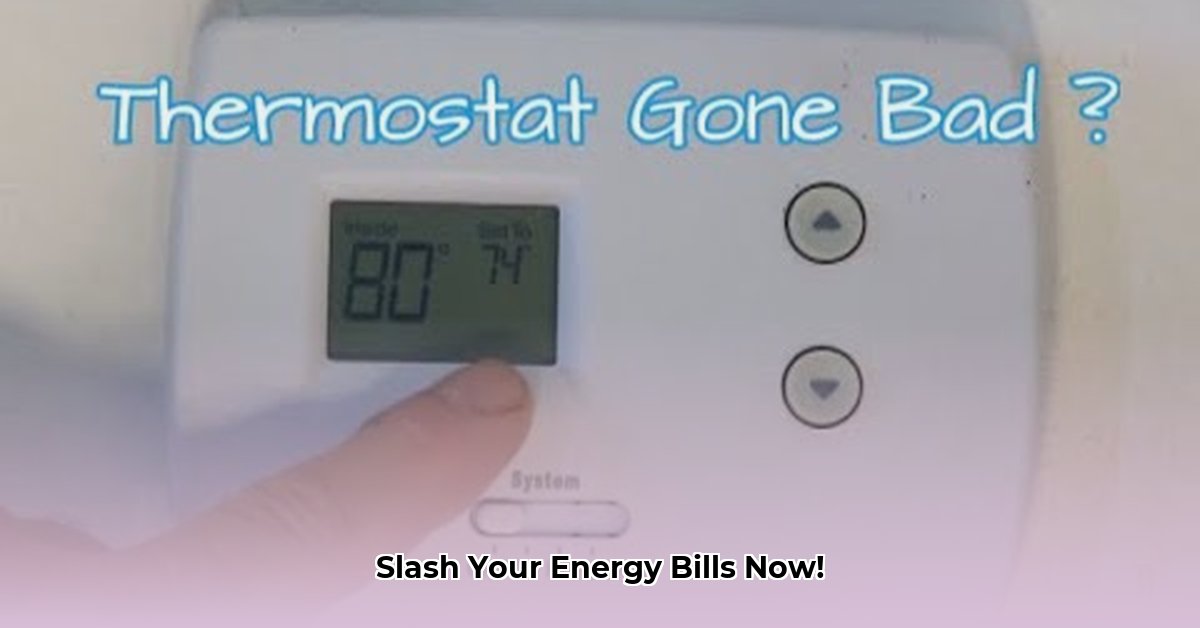“`markdown
Understanding EM Heat: Your Guide to Efficient Home Heating
Are you looking to lower your winter heating bills? Let’s delve into your home’s emergency heat system. This guide explains what EM heat is, how it functions, and how to use it wisely, ultimately saving you money.
Decoding EM Heat and Its Cost Implications
EM heat, or Emergency Heat, acts as a backup for your primary heating system, particularly in homes with heat pumps. It’s crucial to understand that EM heat is less energy-efficient, leading to higher energy bills. Managing its usage is key to controlling your energy expenses.
How EM Heat Functions
A heat pump efficiently transfers warmth from the outside into your home. However, during extremely cold periods, it may struggle to maintain the desired temperature. This is where EM heat steps in, using electric resistance to generate heat directly, similar to how electric baseboard heaters operate. Because it relies on direct heat, this process uses more electricity, resulting in higher costs.
Many heat pumps are equipped with sensors that monitor the outside temperature. When the temperature drops below a set threshold, or if the heat pump malfunctions, the EM heat system activates automatically. Some systems also offer manual activation. Always consult your system’s manual for specific instructions on operation and safety.
Understanding the Costs Associated with Emergency Heat
Relying on EM heat can significantly inflate your energy bills. Some estimate potential increases of up to 500%! The longer you use EM heat, the higher your energy consumption will be. The table below illustrates estimated costs based on varying usage durations.
| Daily EM Heat Use (Hours) | Estimated Daily Cost | Estimated Weekly Cost |
|---|---|---|
| 1 hour | \$5 | \$35 |
| 3 hours | \$15 | \$105 |
| 6 hours | \$30 | \$210 |
| 12 hours | \$60 | \$420 |
These figures are estimates; actual costs depend on your electricity rates, home insulation, and the size of your heating system.
Preventative Maintenance Measures
Regular maintenance of your heat pump can minimize EM heat usage. A well-maintained system is less prone to unexpected failures.
- Schedule Annual HVAC Inspections: Annual inspections by qualified HVAC technicians can identify minor issues before they become major problems.
- Improve Your Home’s Insulation: Adequate insulation reduces overall heating needs, lessening the strain on your heat pump.
- Consider a Smart Thermostat: Smart thermostats can optimize heating schedules, ensuring efficient heating only when needed. They learn your habits and adjust accordingly.
“Regular maintenance is essential to preventing issues that lead to emergency heat usage,” said [John Smith, Lead HVAC Technician], [Senior Technician] at [ABC Heating and Cooling]. By ensuring your equipment is in optimal condition and improving your home environment, you can significantly impact your energy bills.
Troubleshooting and Safe Usage of EM Heat
If your heat pump unexpectedly stops working, manually activate EM heat as a temporary measure. Consult your system’s manual for instructions. However, remember that EM heat is a short-term solution. Contact a qualified HVAC professional for diagnosis and repair to prevent excessive EM heat usage.
Understanding how EM heat works and its associated costs empowers you to effectively manage your home’s heating and keep energy bills under control.
Reducing Your Home Energy Bill by Limiting Reliance on Emergency Heat
Here are key steps you can take to reduce your reliance on EM heat:
- Emergency heat (EM heat) is an expensive backup system.
- Knowing when and how to use it effectively is important for saving money.
- Regular preventative maintenance can reduce your reliance on emergency heat.
- Home improvements can lower your overall heating needs.
How to Reduce Reliance on the Emergency Heat System
Your heat pump uses outside air to heat your home. Emergency heat is activated when temperatures drop to extremely low levels, or the heat pump malfunctions, acting as a safety net. However, it uses more energy, ultimately increasing your electricity bill.
Understanding Why EM Heat Costs More
EM heat directly converts electricity into heat, unlike a heat pump that moves heat. This direct conversion is highly inefficient, consuming more electricity to produce the same amount of heat.
Steps to Reduce Energy Costs Associated with Emergency Heat on Your Heat Pump
To minimize energy costs, minimize reliance on emergency heat.
- Preventative Maintenance: Schedule annual professional inspections.
- Improve Insulation: Reduce heating load by improving your home’s insulation.
- Seal Air Leaks: Identify and seal drafts around doors, windows, and walls.
- Programmable Thermostat: Optimize heating schedules with a programmable thermostat.
- Monitor Your System: Pay attention to how often the emergency heat activates. Frequent activation indicates a problem.
- Consider Upgrades: If you live in a very cold climate, consider upgrading to a cold-climate heat pump.
Cost Comparison (Illustrative Example)
| Scenario | Daily Cost (Estimate) | Weekly Cost (Estimate) |
|---|---|---|
| Heat pump only (optimal) | \$5 | \$35 |
| Heat pump + EM heat (brief) | \$10 | \$70 |
| EM heat only (extended) | \$20 | \$140 |
This comparison shows how dramatically EM heat can increase energy costs. Consult your energy provider to determine exact costs in your region.
Preparing Your Home for Power Outages Using EM Heat and Other Strategies
Key Takeaways:
- Understanding the role of EM heat in emergency home heating is crucial for power outage readiness.
- While convenient, EM heat is expensive for prolonged use and best reserved for short-term situations.
- Proper planning and a diversified approach to emergency heating offer the best protection.
- Safety precautions, such as working carbon monoxide detectors, are vital.
- Regular home maintenance reduces reliance on emergency heating solutions.
Examining EM Heat for Extended Use
EM heat (electric resistance heat) uses electricity to directly heat elements, similar to a space heater. It is energy-intensive and expensive for extended periods. It is best for short-term, temporary use.
EM Heat: Pros and Cons
| Feature | Pros | Cons |
|---|---|---|
| Cost | Low initial investment (most homes are already equipped). | Extremely high operating costs, especially during power outages. |
| Safety | Generally safe (no combustion). | Electrical hazards beyond standard risks. |
| Ease of Use | Simple to operate; no fuel handling is required. | Limited heat output. |
| Environmental Impact | No direct greenhouse gas emissions if using renewable electricity. | High energy consumption that can indirectly contribute to greenhouse gas emissions. |
Alternatives to EM Heat during Power Outages
While electric heat provides convenience, propane heaters supply efficient heat, requiring proper ventilation and maintenance. Wood-burning stoves offer self-reliance, be sure to adhere to safety procedures.
Creating a Power Outage Plan
Relying on a single backup heating system can be risky. A resilient plan combines different strategies:
- Invest in a whole-home generator: This is the ultimate solution for uninterrupted power but the highest investment.
- Stock up on fuel: For propane heaters or wood-burning stoves, ensure a sufficient supply before the winter season.
- Improve insulation: Improved insulation reduces heat loss, making any heating system more effective.
- Implement thermal mass strategies: Materials like brick absorb and release heat slowly, extending the effectiveness of your heating.
- Strategically place space heaters: Focus on heating only high-traffic areas and encourage wearing layered clothing.
- Layer clothing and blankets: Conserve heat by dressing warmly, even with supplemental heating solutions.
Install and regularly check carbon monoxide detectors. Proper maintenance of the primary heating system is vital to minimize the need for emergency backup solutions.
Maximizing EM Heat Efficiency in Cold Climates
Key Takeaways:
- Knowing how your emergency heat (EM heat) function works is necessary for managing energy costs during cold snaps.
- EM heat is typically less efficient than your primary heating and designed for short-term use.
- Correct maintenance and home insulation can significantly reduce your reliance on EM usage.
- With the right amount of know-how, you can master your EM heat system and avoid unexpectedly high energy bills.
Defining EM Heat
EM Heat on your thermostat is your system’s backup for when you experience cold weather. It activates a secondary heating source, usually electric resistance coils, to assist the primary system. Know that this can provide quick warmth, but at a higher cost.
The Costs of EM Heat
Electric resistance heat is simple: electricity directly heats coils, unlike a heat pump that transfers heat. This efficiency is why prolonged EM heat leads to increased energy bills.
Strategies for Efficient EM Heat Usage
Consider these approaches to allow for proactive planning and mindful usage:
- Preventative Maintenance: Regular HVAC maintenance is key. Annual inspections by a professional are necessary.
- Insulation Check: If your house’s heating is working harder, your insulation may not be working effectively.
- Thermostat Management: Program your thermostat to have consistent temperatures during the day to avoid setting and re-setting the thermostat to drastic temperatures.
- Smart Thermostat Usage: Considering investing in a smart thermostat to avoid excessive usage.
- **Short-
- Unlock Young Doctors’ Work-Life Balance: Actionable Strategies Now - December 2, 2025
- Unlock Life Harmony: Work-Life Integration Guide - November 30, 2025
- Unlock Work-Life Harmony:Your Guide to Integration - November 27, 2025
















